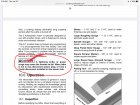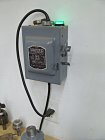- Joined
- Jul 18, 2018
- Messages
- 1,350
- Likes
- 2,929
- Location
- Baltimore, MD
- Website
- loujacobswoodturning.com
I recently acquired a new lathe with a VFD. The documentation suggests installing a cut off switch to isolate the lathe from the power grid, and prevent destroying the VFD in the event of a surge or lightning strike. I wonder if anyone has done this, and what kind of switch do you use, or do you simply unplug the machine when not in use? There is a power on/off switch on the main box on the VFD (separate from the spindle on/off on the front control unit), but my sense is that this is not a sufficient disconnect to actually isolate the machine. I’d love to hear your thoughts.


